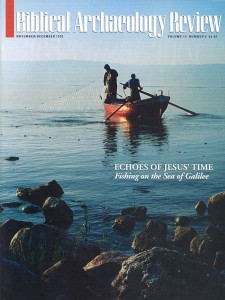Turkey Goes for the Gold (But Keeps the Stone)
Priam’s treasure has been rediscovered—three buried crates of priceless gold and silver! Turkey wants it back in the land where it was originally excavated. Turkey’s case would be immeasurably strengthened, however, if it would return the ugly, but justly famous, piece of limestone known as the Siloam Inscription to the place where it was originally found—Jerusalem. Thus far, Turkey has not only refused to return this ancient Hebrew inscription; it has even refused to lend it for a short time to the Israel Museum.
There is a legal doctrine that denies relief to a claimant who does not come into court with clean hands … Turkey would do well to ponder this maxim.
Priam’s treasure was originally discovered in 1873 in the ruins of ancient Troy—in modern Turkey. Heinrich Schliemann, the brilliant German merchant who led the excavation, believed in Homer in much the same way as Fundamentalists today believe in the Bible. He was convinced that the hoard of gold—goblets, brooches, necklaces, beads, plates—was the treasure of Priam, who had reigned as king of Troy when the city was supposedly destroyed by besieging Greeks in about 1200 B.C. Today scholars date the treasure to at least a millennium earlier, but that hardly diminishes its importance or value—second only, many believe, to the spectacular contents of Tutankhamun’s tomb discovered in 1922.
Schliemann, devoted as he was to the culture of ancient Greece, smuggled the treasure to Athens, where it remained until his death. In his will, however, he bequeathed the treasure “to the German people” for “eternal possession” in Berlin. There it was displayed until World War II.
Already a library member? Log in here.
Institution user? Log in with your IP address.

